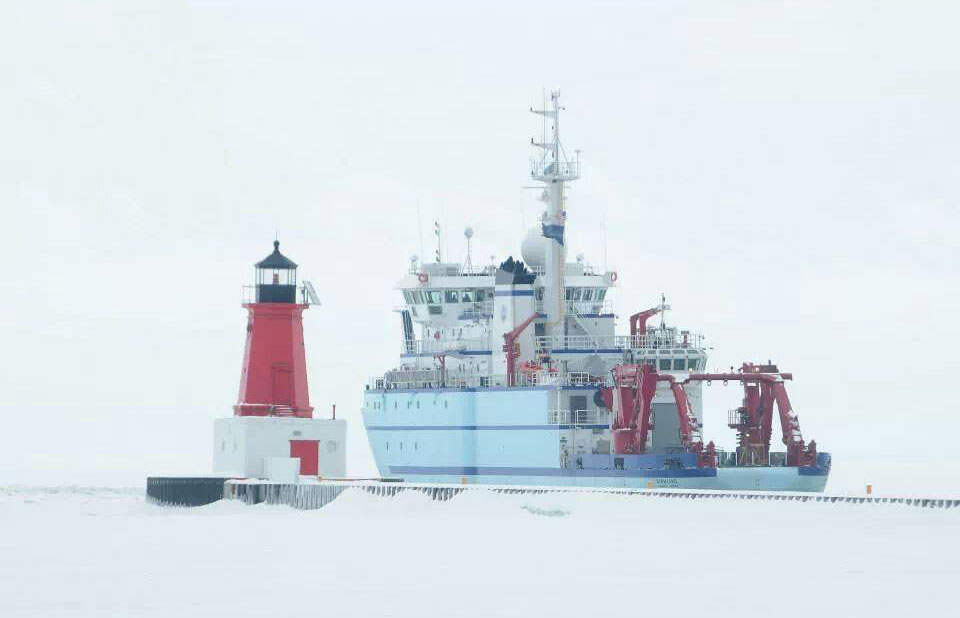The National Science Foundation's ice-capable research vessel Sikuliaq conducted preliminary acceptance trials on the Great Lakes at the end of February, and NSF planners hope to have the vessel in the Washington, D.C., area for a summer visit while completing the remainder of her testing along the east coast.
The 261'×52'×28', 5,750-hp Sikuliaq, designed by Seattle-based Glosten Associates, was built at Marinette Marine in Marinette, Wis. The University of Alaska Fairbanks School of Fisheries and Ocean Sciences will operate the NSF-owned vessel as part of the U.S. academic research fleet.
Sikuliaq is uniquely equipped to operate in ice-choked waters and will be able to do so in extreme ecosystems, especially in the Arctic region, serving the science and engineering research communities for decades to come. The research vessel’s reinforced double hull, two rotating thrusters and scalloped propeller blades will enable it to break through ice up to 2'6" thick.
The vessel features AC/AC diesel-electric propulsion powered by an integrated power plant with two MTU 12V4000 series engines driving 1,310-kW Kato generators and two MTU 16V4000 series engines driving 1,750-kW Kato generators. There are two Siemens 3,000-hp synchronous propulsion motors. Wärtsilä provided the ice-class Z-drives and 90.5"-dia., fixed-pitch, 4-bladed propellers. The package will give the Sikuliaq a top speed of 14 knots.
The Sikuliaq will be the only ship in the UNOLS research fleet rated for year-round operations in first-year ice.




